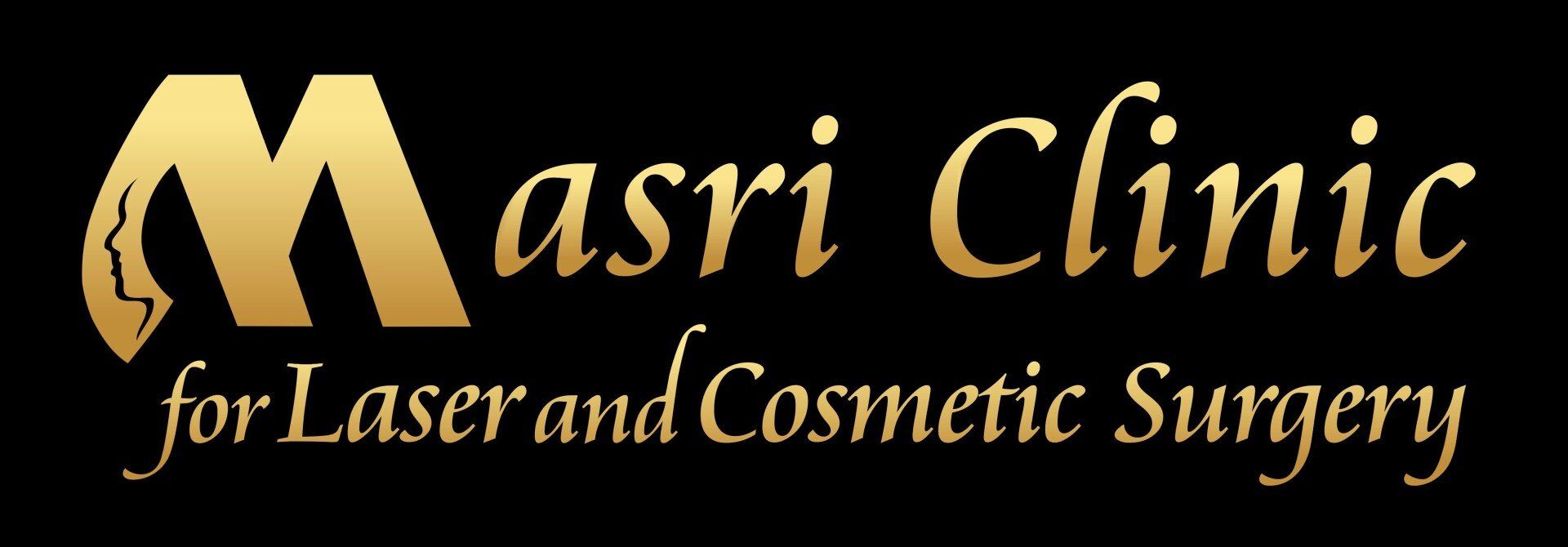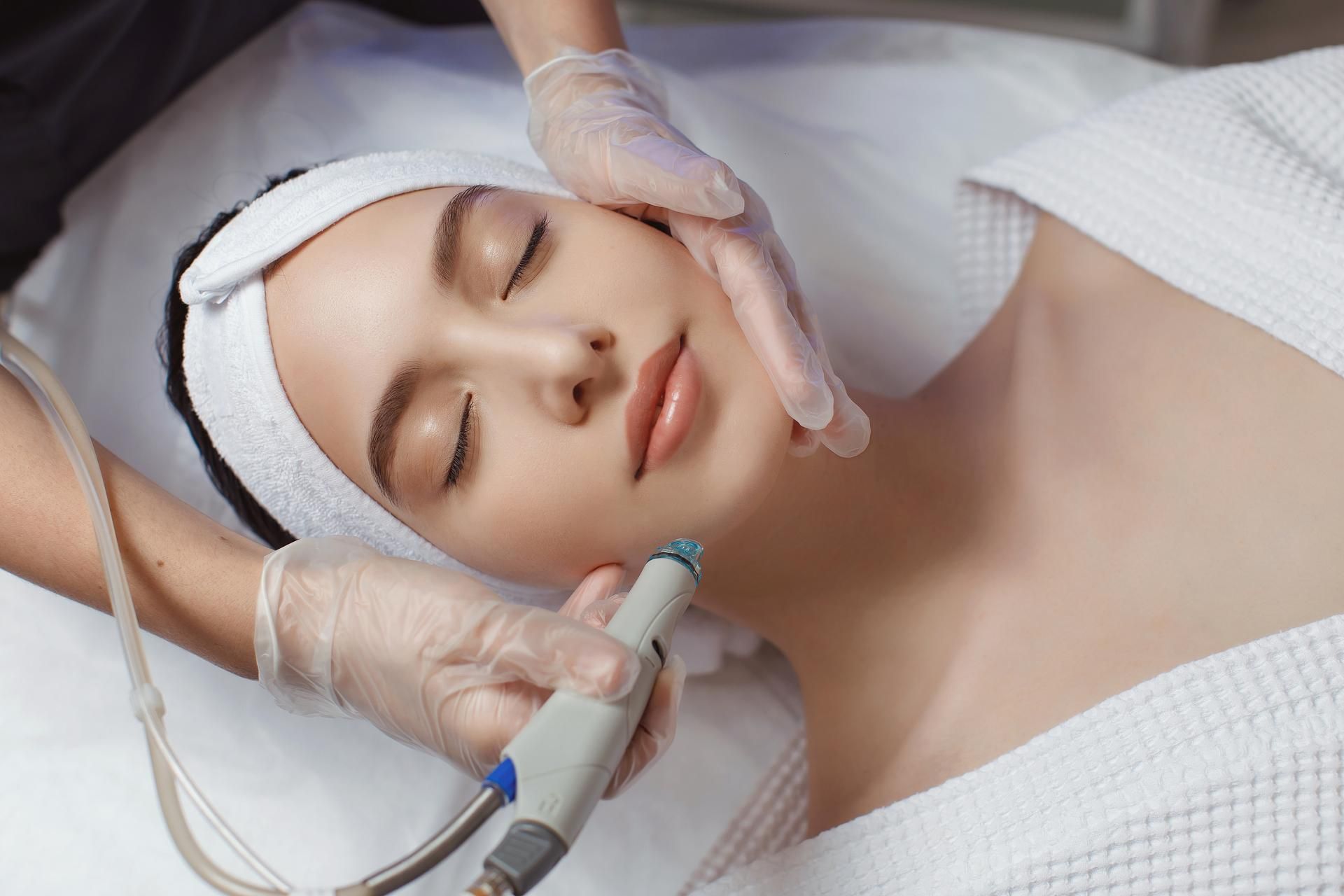What's the Difference Between a Non Surgical Facelift and a Liquid Facelift?
For people who don't want to go through facelift surgery to restore their facial skin to its youthful appearance, they can take advantage of a non surgical facelift procedure to treat fine lines and nasolabial folds. But for a patient who's only considering this option for the first time, it can be confusing trying to figure out what non surgical treatment for a facelift is and why they should get one over a traditional facelift.
So what’s the difference between a non surgical facelift and a liquid facelift, and is there a specific facelift procedure that you should choose between the two? Liquid facelift treatment is considered a non surgical facelift, but a non surgical facelift isn't always a liquid facelift. As for the "best" facelift procedure that you can use for facial rejuvenation, that will depend on the facial skin condition that you're trying to manage.
Non Surgical Facelift vs. Liquid Facelift
A non surgical facelift refers to any type of facelift that doesn't require incisions, sutures, stitches, or skin glue to get results. This type of cosmetic procedure has several advantages compared to a traditional surgical facelift, like less postoperative downtime and other serious side effects. This can be particularly useful with treatments like a neck lift since a non surgical facelift can help lift facial skin without any significant trauma to the patient.
A liquid facelift is a type of non surgical facelift that uses a soft tissue filler like a dermal filler to fill in folds, wrinkles, and fine lines and restore facial volume to the skin. Facial fillers have a variety of effects, ingredients, and methods of action, but they're an excellent and easy alternative for anyone who wants facial rejuvenation without having to go through facelift surgery.
In many cases, a plastic surgeon will be the one to administer your non surgical treatment or injectable filler. While their primary field of expertise may be in plastic surgery, your plastic surgeon may also have considerable experience with non surgical facelift treatments and cosmetic injectables. In some cases, they may even combine traditional facelift methods like plastic surgery with a non surgical procedure like using an injectable dermal filler to get even better results.
Different Types of Non Surgical Facelift
A non surgical facelift is an alternative to cosmetic surgery where small corrections and injections are made on the skin. Primarily targeted at reducing the appearance of sagging skin and closing pores, these treatments take little time and effort and have minimal side effects.
Muscle Relaxers and Wrinkle Relaxers
One of the most common cosmetic injectables used in improving sagging skin is Botox. A Botox injectable treatment freezes the facial muscles in the treated area, blocking any nerve impulses and preventing muscle movement. Because muscle movement is one of the reasons why sagging skin develops, reducing its movement can minimize the appearance of wrinkles and lessen the likelihood that they'll develop.
Regular Botox injections have a considerable advantage compared to cosmetic surgery: Since it’s a non surgical procedure, patients can receive and recover from it faster than a traditional surgical facelift. Unlike plastic surgery, it also doesn't have a long post-procedure recovery time. And if the patient starts Botox treatments early enough, their effects compound and strengthen over time.
There are other wrinkle relaxers that a patient can use aside from Botox, but all of them function similarly as an injectable treatment that tightens loose skin. Aside from being a non-invasive cosmetic procedure, Botox treatments also have medical uses like treating migraines and excessive sweating.
Chemical Peels
A chemical peel is a traditional facelift method used to remove damaged skin cells and encourage new skin growth. You can have different types of chemical peels depending on how deep you want the peel to reach into your skin, which will also determine how much it costs.
Chemical peels are fairly simple and can be performed by anyone medically trained in cosmetic procedures like a plastic surgeon or medical spa staff. It's a minimally invasive facial procedure that helps restore a youthful appearance to the skin and can treat conditions like uneven skin tone, sun damage, or acne scars.
Laser Treatments
Laser treatment is a type of non surgical facelift that uses lasers to resurface the skin, improving its texture and appearance. Depending on the type of laser used, this non surgical procedure can treat skin conditions like warts, scarring, acne, and even some types of facial wrinkles.
Aside from removing the surface layer of the skin to reveal the healthier layer underneath, laser treatment can also increase collagen production. Collagen is essential for skin growth, so increased production can help manage or even treat the signs of facial aging. Because of the abrasive nature of this type of treatment, your dermatologist will discourage you from cosmetic surgery or harsh facial products until your skin heals.
Microdermabrasion and Dermabrasion
Microdermabrasion and dermabrasion exfoliate the top layer of the skin to remove any dead skin cells, revealing healthier skin underneath and encouraging faster and better skin growth. Aside from improving skin appearance and skin tone, it's commonly used to treat rhinophyma, a condition where thick skin forms on the face.
Dermabrasion is simply a more aggressive method of exfoliation compared to microdermabrasion, so you may experience side effects like bleeding and sensitive skin with the former while the latter has little to no side effects. Both these treatments are fairly commonplace and can be used to treat fine lines and loose skin, though they are less effective if the patient has darker skin.
Ultrasound Therapy
Ultrasound treatments are a type of cosmetic procedure that uses ultrasonic energy below the surface of the skin to increase collagen production. It's particularly effective for treating sagging skin and other deep lines and wrinkles since it goes through your body's outer skin layer to target the skin cells deep inside the soft tissue.
Ultrasound therapy has a variety of applications from fat loss, jawline sculpting, and skin tightening, which make it an excellent alternative for facial plastic surgery. Because these treatments don't require any incisions or injections at all, they can work on soft tissue areas around the face or even adjacent areas like the ones involved in a neck lift.
These non surgical facelifts can be performed by your plastic surgeon in place of traditional facial plastic surgery, and they have comparable results to traditional facelift treatments. Keep in mind that issues like cost and exactly how much of a difference the results will have will vary from patient to patient and should be discussed between you and your surgeon before the procedure.
Different Types of Liquid Facelift Procedure
A liquid facelift procedure uses injectable facial fillers to fill in folds and wrinkles under the skin, increasing the facial volume and reducing the signs of facial aging. Because a liquid facelift does not require any incisions, your surgeon can adjust how much injectable filler is needed before each procedure for the best results.
Facial fillers are often categorized by their active ingredient, so while they all work to restore facial volume, each injectable treatment has a different way of going about it.
Juvederm
Juvederm is a popular injectable filler that uses hyaluronic acid as its primary ingredient. As one of the most common injectable filler products available, it's widely used in restoring volume to the cheeks, lips, and around the mouth.
Unlike other injectable dermal filler brands, Juvederm has a wide range of different formulas and treatments that can replicate different kinds of skin elasticity and firmness. These range from a soft tissue filler that can be used on areas around the eyes and mouth, to a more firm injectable dermal filler used to restore volume to larger areas around the face.
Hyaluronic acid also helps with keeping the skin hydrated, which can help your skin withstand the daily wear and tear it goes through. Keep in mind that like other injectable treatments, a hyaluronic acid filler requires regular reapplication as the body absorbs the ingredient given enough time.
Sculptra
Sculptra is another type of facial filler used to treat the signs of facial aging and restore the skin's youthful appearance. Using poly-L-lactic acid (PLLA) as a primary ingredient, it treats deep wrinkles and lines in the face like nasolabial folds and laugh lines.
The primary benefit to choosing Sculptra is that it's one of the dermal fillers that can last for a long time. While the initial results are slow to show up, Sculptra results can last up to two years if the injection schedule is rigorously followed. This is because, unlike a soft tissue filler, Sculptra works by actively encouraging the body to grow new skin cells to fill in folds and other wrinkles. While this method doesn’t give you immediate results compared to treatments like Botox and Juvederm, it does ensure that your Sculptra treatment is easily integrated into your skin.
Another benefit to using Sculptra is that it can be applied almost anywhere on the body, not just the face. Your Sculptra sessions can treat both an uneven jawline and elbow wrinkles without any complications in either treatment, with long-term results and minimal side effects.
Bellafill
Bellafill works a little differently compared to other dermal filler injectables on this list. Its primary ingredient is made up of a collagen base and polymethyl methacrylate (PMMA) microspheres, which can fill in areas like nasolabial folds and acne scars. It can also be used to fill in other types of facial wrinkles and augment areas like the cheeks and nose, but it’s important to note that these are off-label uses.
Bellafill works in two ways. When it’s first injected into your skin, your body will first absorb the collagen base to increase its own collagen production, improving skin elasticity. The PMMA microspheres remain in place at the injection site and provide further support and fill in the treatment area. This makes the results from Bellafill last for an average of five years, though many patients only need one application of the filler material for their entire life.
Even though Bellafill has shown excellent results (with filling in deep folds and wrinkles) that other liquid facelift products can’t, dermatologists and plastic surgeons are unlikely to recommend it as your first dermal filler treatment. Semi-permanent or permanent facial fillers like Bellafill can be difficult to remove if complications arise after treatment, and most facelift providers don’t want to take that risk.
Radiesse
Radiesse works similarly to a hyaluronic acid filler, but it uses calcium hydroxylapatite (CaHA) as a primary ingredient. It’s often used on areas that form deep wrinkles and folds like the skin around the mouth and the nose, with some off-label treatments also showing some success with restoring volume to the cheeks and hands.
The primary ingredients in Radiesse work immediately once they’re introduced to the body, so you should expect to see visible results once the gel has been injected into the treated area. CaHA also stimulates collagen production as it’s absorbed into your system, which can encourage your body to start filling in areas on its own.
On average, Radiesse results can last for one to two years before you need reapplication. The amount of filler needed will depend on how well your skin fills in the area between treatments and the overall age of your skin.
Which Facelift Treatment Should I Choose?
Given that both a non surgical facelift and a liquid facelift procedure have similar benefits compared to traditional facial plastic surgery, which one should a patient choose? It can be difficult to make a decision immediately given the different brands and methods of treatment, which is why consulting with your plastic surgeon or dermatologist is so important.
Since facial anatomy and structure will vary from patient to patient, a treatment that works for someone else may not give you the same results. Aside from the results that you want from your facelift, you need to keep in mind how these results apply to you. Some of them may require regular reapplication for the best results (like Botox and other dermal fillers) while others give you permanent results after one or two treatments (like ultrasound therapy), so you need to work with your provider to see what method works best for you.
By working closely with your plastic surgeon, dermatologist, or medical aesthetician, you can narrow the gap between the results that your selected treatment can provide and the results that you actually want. Don't be afraid to ask questions, get a second opinion, or consult with your facelift provider. It's also in their best interest that you get the results that you want.
Get a Non Surgical Facelift and Other Facial Rejuvenation Treatments at Masri Clinic
A liquid facelift and non surgical facelift are just some of the many options a patient can use to combat the signs of facial aging. With decades of experience in both surgical facelift and non surgical treatment, Dr. Fatina Masri and Dr. Haitham Masri provide their patients with effective cosmetic treatments with long-term results. Whether it's using cosmetic injectables like a dermal filler or traditional surgical facelift, they help restore the youthful appearance of your skin while preventing issues like sagging skin and loose skin.
If you want to go through facelift surgery or prefer a liquid facelift to get rid of fine lines and nasolabial folds, schedule an appointment with the Masri Clinic today.
Payment Options:




Results may vary based on a variety of factors







